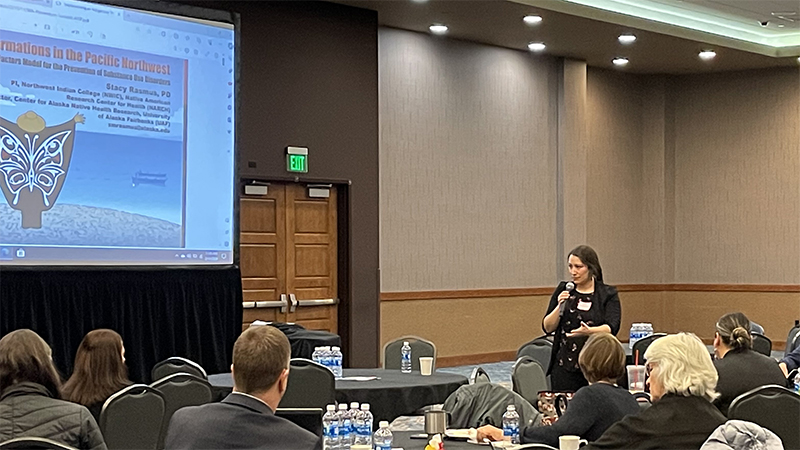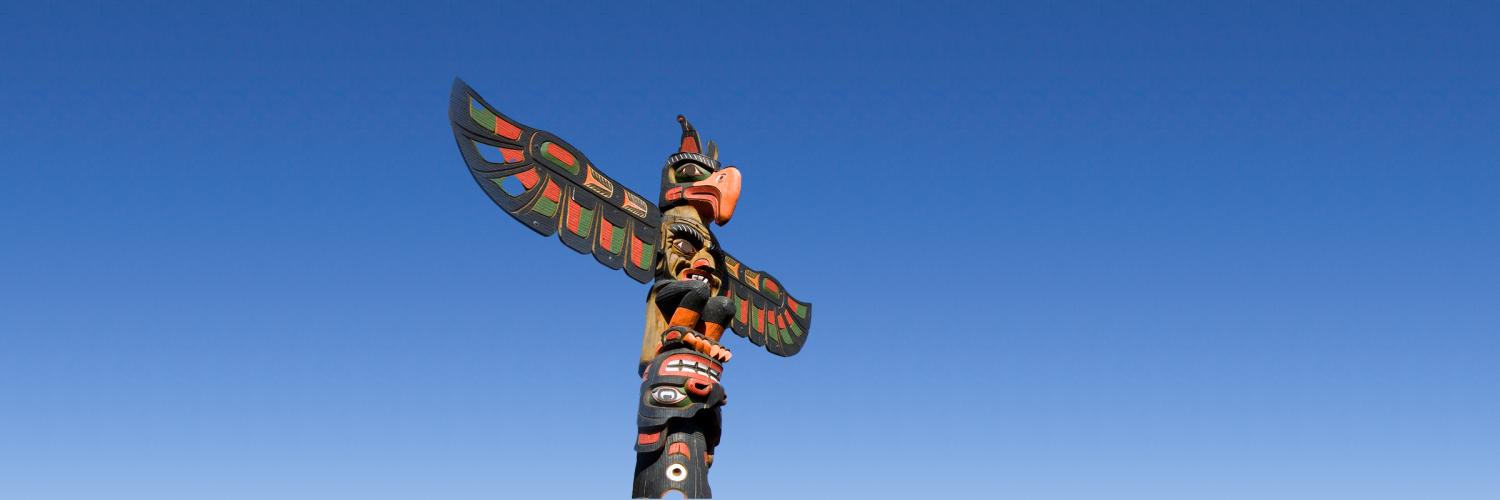One way Tribes are combating the opioid crisis
The opioid epidemic is a public health crisis across the country. Substance use and overdose deaths from opioids—particularly fentanyl—continue to increase at a significant rate. This is especially true in Tribal communities, where life expectancy has dropped by 6.6 years. In Washington State, Native people are three times more likely to suffer drug-induced deaths and five times more likely to die from synthetic opioids, such as fentanyl, than the general population.
Although American Indian and Alaska Native people experience far worse outcomes, Tribes in Washington State are leading the charge in combating the opioid epidemic. Tribes are:
- Health authorities for their communities, and in many regions, serve the entire community—Natives and non-Natives.
- Establishing tribally owned and operated inpatient and outpatient opioid treatment programs, with many serving Tribal and non-Tribal members within their community and regionally.
- Able to appoint Tribal designated crisis responders to support their communities.
- Standing up mobile crisis response teams and mobile medication units.
In addition, some Tribes are implementing a prevention model built off the strengths of Tribal health and wellness efforts and informed by lessons learned from the Icelandic Prevention Model.
What’s the Icelandic Prevention Model?
This model focuses on youth substance use prevention where an entire community is the client. Multi-level governments, public and private partners and organizations, education, justice, and health and social services align and work together to create healthy environments for healthy communities and youth.
Last year, Tribal and state leadership visited Iceland to learn about the Icelandic Prevention Model from Planet Youth, a nonprofit organization that works with communities, states, and nations to implement the model. Seeing how transformative it is for communities, the Northwest Portland Area Indian Health Board is contracting with Planet Youth to pilot the model within these Tribes:
- Tulalip Tribes
- Swinomish Indian Tribal Community
- Jamestown S’klallam Tribe
- Confederated Tribes of the Colville Reservation
- Lummi Nation
In our state, we call this model the Washington State Tribal Prevention System (WSTPS).

Vice Chair Loni Greninger from the Jamestown S'Klallam Tribe speaks at the WSTPS kick-off earlier this year.
What’s WSTPS?
At its core, WSTPS will focus on preventing substance misuse in Tribal communities in our state. It will use the Icelandic Prevention Model as a framework to incorporate Tribal and cultural best practices.
We spoke with Aren Sparck, who serves as the Tribal Affairs Administrator for HCA’s Office of Tribal Affairs (OTA) and asked about WSTPS. Here’s what he had to say.
How does the WSTPS help advance equity for the people we serve?
We can learn from our Tribal partners how multi-jurisdictional, multi-sector, and multi-domain modeling can work in concert to address the opioid/fentanyl crisis afflicting all Washington communities. Much work has been done to combat the crisis with existing services, but this endeavor will give the state a blueprint on upstream planning to address community capacity and infrastructure needs. This will make sure our youth and family units are better prepared to create and maintain healthy environments and education settings to prevent risky behaviors.
What is something you’d like people reading this to know about WSTPS?
This is a 10-year pilot. These Tribes are very motivated to help all our Washington communities to create healthy environments to combat the opioid/fentanyl crisis. They’re so motivated that they are embarking on a remarkably tough journey to smooth out the growing pains for not only the rest of our Tribal communities, but for communities across the state that are interested in the model.
What were some of the “aha” moments in Iceland that you and other Tribal leaders had? What were some specific things you saw that made you think “We have to do this with Tribes in Washington State”?
Icelandic youth today have the lowest incidences of risky behavior, to the point they are empowering themselves to police their events to be drug and alcohol free. When we asked the youth what they thought of the Icelandic Prevention Model, the answer was, “what is the Icelandic Prevention Model?” They are now in a generation where healthy lifestyles are the norm, and risky behavior, or feeling alone without a supportive community, is the outlier.
What we saw is that Iceland built this model off their community and cultural strengths, which our Tribal communities are built upon. Tribal governments can corral all the areas of planning and development necessary for success, which is the ideal environment to test the model.
Are there any big hurdles you’re facing?
Funding. We have year one of the pilot paid for, which covers the Planet Youth contract for our five pilot Tribes as well as a project manager for Year 1 assessment activities. There are two years of planning, but that will include the need for a data manager and an administrative assistant to help schedule and maintain key partnerships in the domains of government, health, human services, youth services, justice, and education. This is a big lift, and ultimately a supreme planning effort to give all these domains a north star to follow collectively.
What do you enjoy most about this work?
The ability to make dreams a reality. No Tribal kid wants to attend funerals of their friends and family members on a regular basis—they want to be kids and enjoy the wonders of the world from their unique perspectives. We are working to create that environment, where we have community supports that are culturally informed to create healthy environments.
What are most excited for in this work?
To create this system through the lens of our Tribal strengths. The opportunity is to show not just our surrounding communities, but our state and even the country that our Tribal systems have been innovating and stewarding healthy environments at an advanced level since time immemorial. Every attempt to eradicate our culture and people only make us stronger, and we can show what fully funding our systems can do to advance culturally attuned planning and program development.
What is the one thing readers can do today to advance health equity, either personally or professionally?
Know that being an ally isn’t a proclamation, but an ongoing action. To know that you need to listen and believe before you suppose and act.
